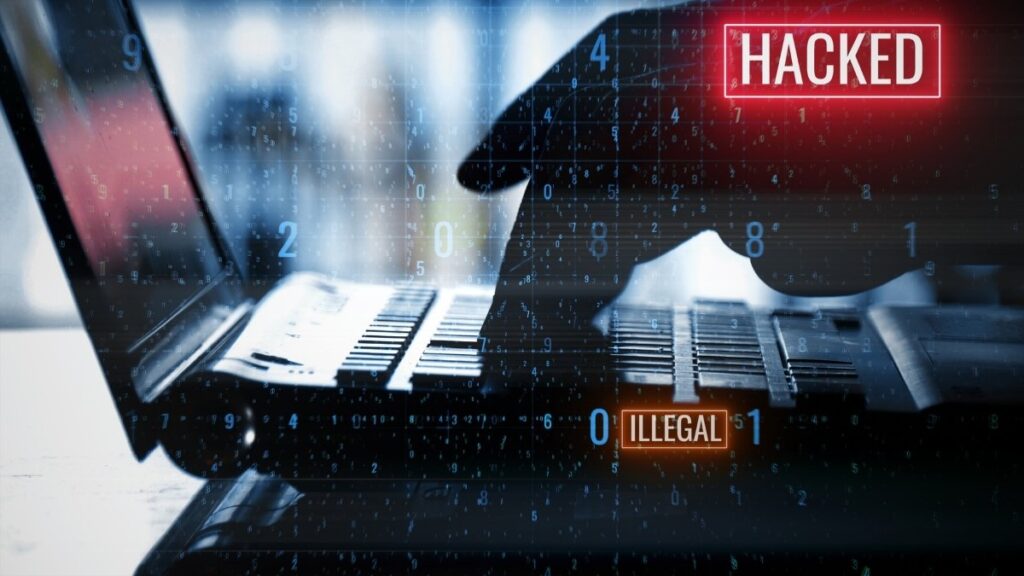
The video call connects, and the image is perfectly clear. It is your trusted financial advisor, the one who has guided your investments for over a decade. The voice is familiar, the mannerisms are exact, and the concern on their face appears genuine. They explain, with a tone of controlled urgency, that their firm has just identified a catastrophic security breach. Your 401(k), the product of a lifetime of work, is exposed.
To protect it, they state, the funds must be moved immediately—within the hour—to a new, federally insured “secure digital wallet” that has been set up for you. They provide the details and walk you through the transfer process, their reassuring voice guiding your every click. In this moment, every instinct tells you to trust and act. And that is precisely why your life savings are about to disappear.
This scenario is not a futuristic hypothetical; it is a composite of real-world, multi-million-dollar frauds that are happening now. The fundamental nature of the threat to your financial security has shifted. It is no longer a matter of spotting a poorly spelled email from a foreign prince. The confluence of three powerful forces—the rapid democratization of generative artificial intelligence (AI), the complete digitization of retirement assets, and the sophisticated social engineering of affluent demographics—has rendered traditional cybersecurity advice dangerously obsolete.
II. The New Arsenal of the 401(k) Scammer: Understanding the AI Revolution in Fraud
To defend against the modern financial predator, it is essential to first understand their weapons. The tools available to criminals have evolved from simple email templates to a sophisticated suite of AI-powered technologies designed to mimic, manipulate, and deceive. This new arsenal makes attacks more convincing, harder to detect, and scalable in ways that were previously impossible.
A. Deepfakes: When You Can’t Trust Your Eyes and Ears

At the forefront of this technological shift is the deepfake. In simple terms, a deepfake is a piece of synthetic media—an audio recording, a video, or an image—in which a person’s likeness has been replaced or manipulated using artificial intelligence. The technology has become frighteningly accessible and effective. A convincing voice clone, for example, can now be generated from as little as a 30-second audio sample, which can be easily scraped from a social media video, a podcast appearance, or even a saved voicemail message. This allows a scammer to literally put words in someone’s mouth, creating a fraudulent message delivered in a voice that is indistinguishable from the real person’s.
The sophistication of this technology is not theoretical; it is being actively deployed in high-stakes corporate espionage and fraud. A landmark case involved Jill Popelka, the CEO of cybersecurity firm Darktrace. Her team received a voicemail that used a deepfake of her voice to request confidential information. The audio was so perfect that Popelka herself admitted, “I couldn’t tell the difference”. This incident serves as a stark blueprint for a type of attack that is now being scaled down from the corporate boardroom to target individuals and their retirement accounts. If the CEO of a company built to detect digital anomalies can be so convincingly impersonated, the threat to the average person is profound.
While deepfakes are becoming more realistic, they are not yet flawless. Current technological limitations mean that tell-tale signs often remain, if one knows what to look for. Individuals must retrain their senses to act as a first line of defense.
The Red Flags – A Sensory Checklist
Audio Red Flags: Listen for unnatural pacing or awkward pauses, as the AI may be generating the speech in real-time. The emotional tone may be flat or mismatched with the content of the message—for example, a calm voice delivering a panicked plea for help. Other signs include a robotic cadence, strange vocal inflections, or an unnatural lack of ambient background noise, which can make the audio sound too “clean” or sterile.
Video Red Flags: Pay close attention to the eyes; unnatural blinking patterns (too much, too little, or not at all) are a common giveaway. Lip-syncing may be slightly off, and the edges of the face or hair may appear blurry or distorted. Look for inconsistent lighting on the face compared to the background, an unnatural skin texture that appears too smooth or waxy, and stiff or jerky head movements.
B. The Phishing Hydra: Vishing, Smishing, and the Rise of Quishing

Phishing, in its various forms, remains the most common delivery mechanism for financial scams. However, AI has supercharged these traditional methods, creating a multi-headed hydra of digital deception. Understanding the specific terminology is the first step toward recognizing the threat.
Phishing: The use of deceptive emails to trick recipients into revealing sensitive information or clicking on malicious links.
Vishing: Voice phishing, which involves deceptive phone calls. This is now frequently powered by the AI voice-cloning technology described above.
Smishing: SMS phishing, which uses fraudulent text messages to achieve the same goals.
Quishing: The newest and rapidly growing threat of QR code phishing.
AI acts as a force multiplier across all these vectors. It can generate flawless, personalized phishing emails that effortlessly bypass spam filters by mimicking the writing style of a trusted institution. It can power interactive, real-time vishing calls that respond to a victim’s questions using a cloned voice, making the conversation feel authentic. As one expert bluntly stated, fraud powered by generative AI is “only limited by the criminal’s imagination”.
The Hacker’s Phishing Trip! 🐟
Don’t get hooked! Here’s how modern phishing attacks try to lure you in. Click each lure to see the trap.
Phishing
Primary Channel: Email
AI Enhancement: Personalized text, flawless grammar, and spoofed sender details to bypass spam filters.
Psychological Tactic: Authority & Urgency
401(k) Example: An email from your “provider” warning of “unauthorized login attempts,” urging you to click a link immediately to secure your account.
Vishing
Primary Channel: Phone Call
AI Enhancement: Real-time AI voice cloning of a family member or trusted official (e.g., financial advisor).
Psychological Tactic: Fear & Empathy
401(k) Example: A frantic voicemail in your grandchild’s cloned voice, claiming they need you to send cryptocurrency for bail.
Smishing
Primary Channel: SMS/Text Message
AI Enhancement: Generation of believable pretexts and links that look legitimate on a small mobile screen.
Psychological Tactic: Curiosity & Trust
401(k) Example: A text from your “mobile carrier” stating you’ve won a loyalty reward and must log in via their link to confirm your identity.
Quishing
Primary Channel: QR Code Image
AI Enhancement: Obfuscation of malicious links within an image, bypassing traditional security scanners.
Psychological Tactic: Convenience & Impulse
401(k) Example: An email from “HR” about a new retirement tool. It has a QR code for “easy mobile access” that leads to a fake login page.
A particularly insidious new tactic is “quishing.” Scammers are now embedding malicious QR codes into phishing emails or even placing physical stickers with fraudulent codes over legitimate ones on parking meters, restaurant menus, and promotional flyers. When a victim scans the code with their smartphone, one of two things typically happens: they are redirected to a credential-harvesting website that is a perfect replica of their 401(k) provider’s login page, or malicious software is silently downloaded to their device, designed to steal their financial information. QR codes are particularly dangerous because their destination is hidden, and they often bypass traditional email security filters that are designed to scan for suspicious links, not images.
III. The Anatomy of a 401(k) Heist: Tactics, Targets, and Trillions at Risk
Understanding the scammer’s tools is only half the battle. It is equally critical to understand their strategy: why they target retirement accounts with such focus, the psychological narratives they employ, and the devastating financial impact they are having on a specific, vulnerable demographic.
A. The Bullseye on Your Back: Why Your 401(k) is the Grand Prize

Cybercriminals are strategic operators motivated by maximizing their return on investment. From this perspective, 401(k) and other retirement accounts represent the ultimate prize. These accounts are often the largest single financial asset an individual possesses, containing sums of money that can be life-altering for both the victim and the thief.
Unlike a checking account, which is subject to daily transactions and frequent monitoring, retirement accounts are often reviewed less frequently—perhaps quarterly or even annually. This provides criminals with a much larger window of opportunity to execute a theft and transfer the funds before the crime is discovered. Furthermore, the emotional weight of these funds is immense; they represent not just money, but a lifetime of work, security in old age, and a legacy for future generations. A successful heist is therefore not just a financial loss but a catastrophic personal event, a reality that scammers exploit to their advantage.
B. The Scammer’s Playbook: Common Narratives Targeting Your Nest Egg

Criminals rely on a set of well-honed psychological plays designed to bypass rational thought and trigger an immediate, emotional response. These narratives are now being amplified and made more believable through AI and deepfake technology.
The “False Alarm” Imposter Scam: This is the most prevalent and financially damaging tactic, according to FTC data. The scam begins with an urgent, unsolicited communication from a scammer impersonating a trusted entity—Amazon flagging a fraudulent purchase, Microsoft warning of a computer virus, a bank reporting suspicious activity, or even the Social Security Administration claiming a compromised number.
The Deepfake Family Emergency: This is the technologically advanced evolution of the classic “grandparent scam.” The attack is a vishing call that uses an AI-cloned voice of a grandchild, child, or other close relative. The voice will sound panicked and distressed, claiming to be in an emergency—an arrest, a car accident, a kidnapping—and in desperate need of money for bail, medical bills, or ransom.
The Fraudulent Rollover and Investment Scheme: In this scenario, scammers pose as sophisticated financial advisors or retirement planners. They contact victims with promises of impossibly high, guaranteed returns and convince them to roll over their legitimate 401(k) into a self-directed IRA. Once the funds are moved, the “advisor” directs the victim to “invest” in fraudulent ventures, such as wildly overpriced assets, non-existent real estate, or fake cryptocurrency platforms.
The Credential Harvesting Attack: This is a more direct assault where the sole goal is to steal the username and password for the victim’s online 401(k) portal. Using the phishing, smishing, or quishing techniques described earlier, scammers lure victims to a fake login page and capture their credentials. Once they have access, they can initiate unauthorized loans or withdrawals, slowly draining the account over time to avoid immediate detection.
C. Data Deep Dive: The Financial Carnage for Older Americans

The statistics paint a clear and disturbing picture of who is bearing the brunt of this new wave of fraud. The financial devastation is disproportionately concentrated among older Americans.
Soaring High-Value Losses: The trend is not just one of growth, but of explosive acceleration in high-value theft. From 2020 to 2024, the number of fraud reports filed with the FTC by adults over 60 involving losses of $10,000 or more more than quadrupled, climbing from 1,790 reports to 8,269. The trend for even larger losses is more striking: over the same four-year period, reports of losses exceeding $100,000 increased nearly sevenfold.
Disproportionate Impact: When compared to younger demographics, the vulnerability of older adults becomes starkly apparent. In 2024, individuals over 60 were more than twice as likely to report a fraud loss of over $10,000 and three times as likely to report a loss exceeding $100,000.
The Vectors for Catastrophic Loss: For these high-value scams targeting older adults, the initial point of contact is overwhelmingly a direct, personal interaction. A phone call was the starting point in 41% of cases with losses over $10,000. This was followed by an online ad or a fake security pop-up (15%) and a targeted email (13%). This data highlights the importance of the human element; scammers prefer the high-pressure environment of a live call to execute their most lucrative schemes.
The Escape Routes for Stolen Money: The methods used to extract funds reveal a clear preference for speed and anonymity. In 2024, cryptocurrency was the most frequently reported payment method in high-loss scams targeting older adults (33%), followed by bank transfers (20%) and physical cash (16%). The prominence of crypto, often involving instructions to deposit cash into Bitcoin ATMs, underscores the criminals’ strategy of moving money into channels that are difficult to trace and nearly impossible to reverse.
A crucial pattern emerges from this data. The most devastatingly successful scams operate by inverting their victims’ security instincts. Traditional advice has conditioned people to be wary of requests to “send money to a stranger.” Scammers have cleverly bypassed this mental guardrail. They no longer ask for money directly.
IV. The 2025 Checklist: A Multi-Layered Defense to Lock Down Your Financial Future
In the face of such sophisticated and psychologically manipulative threats, a simple list of “dos and don’ts” is no longer sufficient. Protecting your retirement savings requires a robust, multi-layered defense strategy that integrates mindset, technology, and institutional oversight. This checklist is designed to build a comprehensive shield around your financial future.
Layer 1: The Human Firewall – Fortifying Your Mindset and Behaviors

The most advanced security software in the world can be bypassed if a criminal can trick you into opening the door. The first and most critical layer of defense is you.
Principle 1: Adopt Zero-Trust Communication. The foundational principle for the AI age is to trust no unsolicited contact. In a world where voices and faces can be convincingly faked, an unexpected call, text, or email—no matter how authentic it seems—must be treated as suspect. The single most important action is to VERIFY INDEPENDENTLY. If you receive a call from someone claiming to be from your bank, hang up. Do not call back the number on your caller ID or use any contact information provided in the message. Instead, find the institution’s official phone number from your bank statement, the back of your credit card, or their official website, and initiate a new call yourself.
Principle 2: Create Verification Protocols. For threats that prey on personal relationships, a simple, low-tech solution can defeat a high-tech attack. Establish a secret “safe word” or a challenge question with close family members—something personal that an outsider could never guess. If you receive a frantic call from a “loved one” in distress, ask for the safe word. If they cannot provide it, it is a deepfake scam. This simple protocol can instantly defuse the emotional power of a vishing attack.
Principle 3: De-weaponize Urgency. Scammers are masters of emotional manipulation. Their primary tool is creating a manufactured sense of crisis and urgency to force you into making a rash decision. They need you to act immediately, before you have time to think clearly, consult with someone else, or spot the flaws in their story. Your most powerful defense is to PAUSE. No legitimate financial institution or government agency will ever demand an immediate, irreversible fund transfer over the phone. Taking a breath, hanging up, and giving yourself time to think breaks the scammer’s script and allows logic to re-engage.
Principle 4: Practice Digital Minimalism. Scammers build their attacks using the personal information you make publicly available. They use details from your social media profiles to make their phishing emails more convincing and scrape audio and video clips to train their deepfake models. Take proactive steps to limit your digital footprint. Review and tighten the privacy settings on all your social media accounts. Be mindful of what you post, and avoid sharing sensitive personal details, such as your full birth date, hometown, or family members’ names.
Layer 2: Digital Fortifications – Securing Your Accounts and Devices
While a fortified mindset is crucial, it must be supported by strong technical controls. This layer focuses on making your digital accounts as difficult as possible for criminals to access, even if they manage to trick you.
Build Your Digital Fortress! 🏰
Your security is a layered defense. Click each part of the fortress to see the blueprint for that action item.
The Main Gate (Passwords)
The Watchtower (MFA)
The Walls (Audits)
The Foundation (Hygiene)
Blueprint: Passwords 🔑
Use Passphrases, Not Passwords
Short passwords like P@$$w0rd! can be cracked in minutes. Use a passphrase (3-5 unrelated words) for a much stronger defense. Example: 94-Lemonbrownmountain$.29
Use a Password Manager
Reusing passwords is a huge risk. A password manager creates and stores unique, complex passwords for every site in a secure “vault.”
| Manager Name | Best For | Key Security Feature |
|---|---|---|
| NordPass | Overall | XChaCha20 encryption; zero-knowledge architecture. |
| 1Password | Families & Sharing | “Travel Mode” hides vaults; secure sharing. |
| Keeper | Security Features | Customizable vault; supports hardware security keys. |
| Bitwarden | Free & Open Source | Core features are free; open-source & audited. |
Blueprint: MFA 🛡️
Enable Multi-Factor Authentication (MFA) Everywhere
MFA is the single most effective defense against account takeovers. It requires a second “key” (like a code from your phone) in addition to your password.
Warning: Always use an authenticator app instead of SMS texts. SMS is vulnerable to “SIM-swapping” attacks.
| App Name | Best For | Key Feature |
|---|---|---|
| Google Authenticator | Most People | Simple, lightweight, and now has encrypted cloud backup. |
| Microsoft Authenticator | Microsoft Users | Seamless integration; supports passwordless sign-ins. |
| Authy | Cloud Backup & Sync | Securely syncs across multiple devices (phone, desktop). |
| Bitwarden Authenticator | Transparency | Integrated within the Bitwarden password manager. |
Blueprint: Audits 🧱
Conduct Routine Security Audits
Make it a habit to log in and review your 401(k) and other financial accounts at least once a month.
- Look for any transactions or changes you did not authorize.
- Verify that your contact information (phone, email, address) is correct on all accounts.
- Go into settings and enable every available security alert (for transactions, password changes, etc.).
- Review your credit report for free at least once a year from AnnualCreditReport.com to check for identity theft.
Blueprint: Hygiene 🧼
Practice Basic Cyber Hygiene
These are the fundamental habits that keep you safe online.
- Never use public, unsecured Wi-Fi (like at a coffee shop) for financial transactions or logging into sensitive accounts.
- Keep everything updated: This includes your computer’s operating system (Windows, macOS), your phone (iOS, Android), and your web browsers.
- Use reputable antivirus and anti-malware software on your computers to protect against malicious downloads.
Layer 3: The Institutional Shield – Your Rights and Your Plan Sponsor’s Responsibilities
You are not alone in this fight. The security of your retirement account is a shared responsibility between you, your employer (the plan sponsor), and the financial institution that administers the plan (the recordkeeper). Understanding the obligations of the other parties empowers you to hold them accountable.

What Your Employer Owes You: The U.S. Department of Labor (DOL), under the Employee Retirement Income Security Act (ERISA), has established clear cybersecurity best practices for plan sponsors. As a plan participant, you have a right to expect your employer to adhere to these standards to protect your assets. Key responsibilities include:
- Maintaining a formal, well-documented cybersecurity program.
- Conducting prudent annual risk assessments to identify and mitigate threats.
- Rigorously vetting third-party service providers (like Fidelity, Vanguard, or other recordkeepers) to ensure they have strong security controls.
- Obtaining an annual third-party audit of their security controls.
- Having a detailed incident response plan in place to address breaches.
- Maintaining adequate cybersecurity insurance to cover potential losses.
V. After the Attack: A Step-by-Step Recovery and Reporting Guide

Even with the best defenses, a determined attacker may succeed. If you suspect you have become a victim of fraud, acting quickly and methodically can help mitigate the damage and aid in the recovery process. Panic is the enemy; a clear action plan is your best ally.
Step 1 (Immediate): Contain the Breach
Your first priority is to stop the bleeding and prevent further losses.
Contact Your 401(k) Provider: The very first call you should make is to your retirement plan’s recordkeeper or administrator. Report the fraudulent activity immediately and ask them to freeze the account to prevent any further unauthorized transactions.
Alert Other Financial Institutions: Immediately contact your banks and credit card companies to inform them of the potential identity theft and to monitor your accounts for suspicious activity.
Change All Critical Passwords: Start by changing the password on your primary email account. If a criminal has access to your email, they can reset the passwords on all your other accounts. Then, proceed to change the passwords on all your other financial, social media, and important online accounts. Use your password manager to create new, unique, strong passphrases for each.
Place a Fraud Alert or Credit Freeze: Contact one of the three major credit bureaus (Equifax, Experian, or TransUnion) to place a fraud alert on your file. This warns creditors to take extra steps to verify your identity before opening new credit in your name. For stronger protection, consider a credit freeze, which restricts access to your credit report, making it much more difficult for identity thieves to open new accounts.
Step 2 (Official Reporting): Create a Paper Trail
Reporting the crime is essential not only for your own case but also for helping law enforcement track criminals and protect others from becoming victims.
File a Report with the FBI: Submit a detailed complaint to the FBI’s Internet Crime Complaint Center at ic3.gov. This is the federal government’s central hub for reporting cybercrime and is used by law enforcement agencies to investigate and prosecute these cases.
File a Report with the FTC: Submit a report to the Federal Trade Commission at ReportFraud.ftc.gov. The FTC uses these reports to identify fraud trends, share information with law enforcement partners, and educate the public about emerging scams.
Step 3 (Support): Overcome the Emotional Toll
The financial loss from a scam is only part of the damage. Victims often experience significant emotional distress, including feelings of embarrassment, shame, and anger. It is crucial to address this emotional toll.
Do Not Suffer in Silence: One of the scammer’s greatest victories is convincing their victim to remain silent out of embarrassment. Recognize that you are the victim of a sophisticated crime, not a personal failure. Talk to trusted family members or friends about what happened.
Seek Expert Guidance: You do not have to navigate the aftermath alone. Contact the AARP Fraud Watch Network Helpline at 877-908-3360. This is a free resource with trained fraud specialists who can provide support, guidance on next steps, and help you avoid future scams.
Conclusion: Building a Resilient Retirement in the Age of AI
The landscape of financial security has been irrevocably altered. The rise of accessible, powerful artificial intelligence has armed criminals with tools of deception that were once the domain of intelligence agencies. The threat to your retirement is no longer a distant possibility but a clear and present danger, executed with a level of personalization and psychological acuity that demands a new level of vigilance.
The defense against this new reality cannot be a single product or a simple password. It must be a comprehensive, multi-layered strategy that hardens every potential point of failure. It begins with the Human Firewall: a fundamental shift in mindset toward a state of healthy, informed skepticism, where unsolicited communications are never trusted at face value and verification is an ingrained reflex. It is reinforced by Digital Fortifications: the diligent use of modern security tools like password managers and multi-factor authentication that create technical barriers to unauthorized access. Finally, it is supported by the Institutional Shield: an understanding of the shared responsibility for security and the empowerment to hold employers and financial institutions accountable for their duty to protect your assets.
The goal of this guide is not to foster a state of perpetual fear, but to cultivate a state of perpetual preparedness. By understanding the new weapons of the digital fraudster, recognizing their psychological tactics, and implementing a robust, layered defense, you can navigate the complexities of the AI age with confidence. Vigilance, verification, and proactive security are the new cornerstones of a safe and prosperous retirement. The financial future you have spent a lifetime building is worth protecting.
Begin today. Take three immediate, concrete steps from the checklist:
- Enable multi-factor authentication on your 401(k) and primary bank accounts.
- Install a reputable password manager and begin the process of changing your critical passwords to unique passphrases.
- Have a conversation with your closest family members about establishing a secret “safe word” for emergency verification.
These actions, taken now, are the first and most critical steps in locking down your financial future against the threats of tomorrow.






